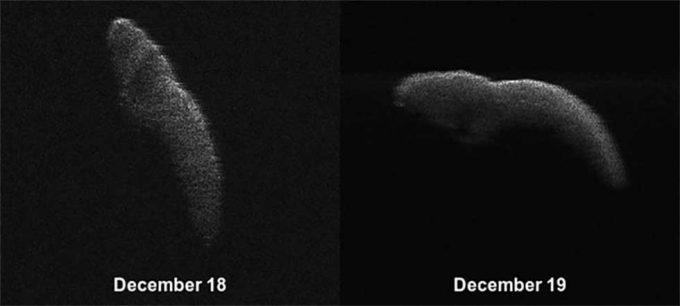NASA imaged Christmas hippo asteroid with radar
NASA was excited about the very close pass by of near-Earth asteroid 2003 SD220 recently. The reason that NASA was so aflutter is that the asteroid made the closest pass to Earth than any asteroid has made in the last 400 years. The next time that an asteroid comes as close to the Earth will be in 2070.
While the asteroid was passing so nearby, at least on cosmic terms, NASA took the opportunity to study the object as much as possible. To that end, NASA hit the asteroid with radar to take the images seen here. What the images show is an asteroid with a length of at least 1.6 miles and the shape that is similar to a hippo wading in water.

The radar images were taken December 15-17 by coordinating observations with the NASA 230-foot antenna at the Goldstone Deep Space Communications Complex in California, the 330-foot Green Bank Telescope in West Virginia, and the 1000-foot Arecibo Observatory in Puerto Rico. The Green Bank Telescope was used as the receiver for the powerful microwave signals sent by Goldstone or Arecibo using a bistatic radar configuration.
NASA says that the radar images achieve an "unprecedented level of detail" and are comparable to images taken by a spacecraft flyby. The images confirmed what was seen in previous light curve measurements of sunlight reflected from the asteroid. 2003 SD220 has a slow rotation period of roughly 12 days and has non-principal axis rotation, similar to a poorly thrown football.
Resolution of the images was as fine as 12-feet, 20 times higher than images taken when the asteroid approached the Earth three years ago. The detailed images help NASA to understand how these small bodies form and evolve.
